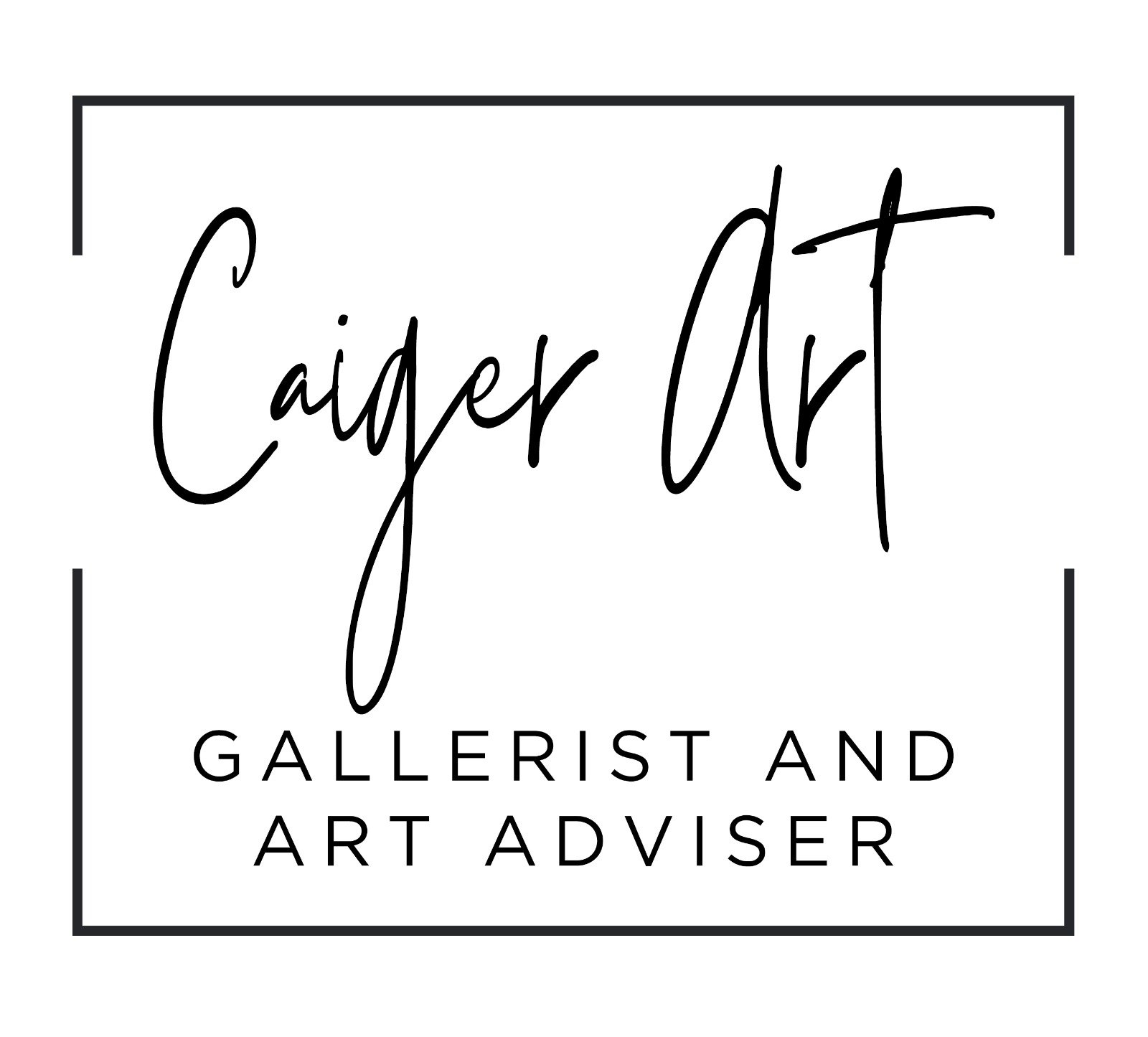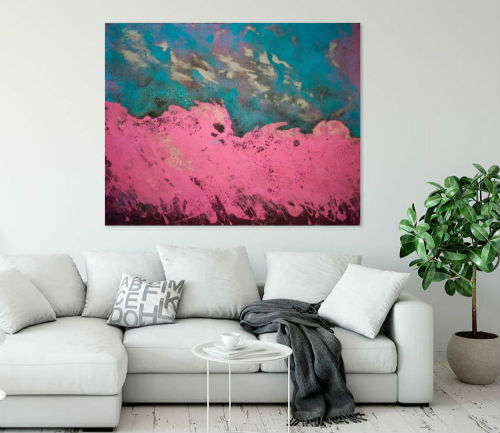Artist In The Spotlight:.....Sam Peacock
Sam uses a mix of recycled metals and industrial paints to create landscape pieces. “I gorge on the speed and power of mark making, the rawness and the ferocity of paint: how brush marks shift, scrape and overlap to build up structures and forms which compel me to paint, I look incisively for the conversation within the form to build this up on the canvas as the work evolves”. …well, we wanted to know more!
Carol: What is the inspiration behind your artwork and how does it relate to your pieces?
Sam: The main inspiration over the years has centred solely on the evolving landscape in Britain and Australia. I tend to find stories within the landscape which hold either contemporary themes such as Hydraulic Fracturing, also known as Fracking, or something more historical such as ancient Pathways that sometimes become hidden during modernisation of towns and cities, these morph during the work and appear as scratches and marks which sometimes seem like cloud patterns in a skyline.
I take a lot from digging holes and studying what lies beneath the surface of a field. I have a metal detector and do lots of field work and geological studies of the landscape. Deep down I always wanted to appear on Time Team with Tony Robinson and do that instead.
Parsonage by Sam Peacock
Carol: When did you know you were going to be an artist?
Sam: I don’t think I ever did. I went to art college and did my A Levels in the 90’s and used to enjoy the freedom it gave me, my degree course did not go as planned however and I went into teaching pretty much straight after. I always enjoyed making art and was lucky enough to be able to sell things I had made. During my last few years of teaching, I was selling and showing work on a regular basis and thought it’s probably now or never giving this a crack. I used to quite enjoy seeing the artwork that kids I taught used to come up with and was happy that they also found a love of the subject. It can be a proper analogue hobby/career if you let it, it takes over your life and changes how you view the world. I don’t think all the stuff I make is particularly finished or is ever likely to be, but I think that’s part of it.
Tithe Barn by Sam Peacock
Carol: What artist inspires you?
Sam: I could answer this as a who’s who of art. I always enjoyed Kurt Schwitters Merzbau series and the work of Franz Kline. But there are some amazing people out there right now making really good artwork that are maybe represented by yourselves or other galleries that are doing their best to promote work of artists we both know and admire. There is one artist whose work I could happily sit in an empty room with all day and that is of later Georgian period artist John Martin. I went to see “Pompeii” after it was restored following the flood at the Tate in 1928. In his time, he was pure box office, people of high society would queue up to get in to see his work, similar to how crowds ram the white cube to see Tracy Emin.
Carol: - Can you tell us how you start your pieces and a bit about the process?
Sam: Process wise, the steel gets a spray of chemicals first, dependent on the surface I am going to achieve. It’s a controlled process followed by a good blast of butane propane flame. Colour’s are added to the work in accordance with site visits and research. For example, If I’m metal detecting a field and come across an amazing piece of late Victorian agricultural machinery, I record the colour’s and try to find a similar density and pigment as that. Heat plays its part and I generally set a fire on Fridays to take the edge off it all. The paintings are then etched Into with a variety of electrical and man made tools before more layers are added then scraped back to reveal underlying tones and texture.
Bristow Hill by Sam Peacock
Carol: How long does it take to complete a piece?
Sam: I make them on batch. I create roughly 8 at a time at present. Usually as there are shows coming up or a gallery wants a fresh run. The whole process from start to finish takes about a month. There are times however that I think some of them look awful and won’t release them.
Toll by Sam Peacock
Carol: Do you have a typical question that everyone asks you about your work?
Sam: I’m a great one at deflecting questions from people and always try to talk about something else. The odd thing is that I don’t get to talk to that many members of the public anymore as galleries take care of that on my behalf. I did a live art day recently with Hannah Baker and that was good fun, most people weirdly had seen my work online and knew what I was about so that was quite cool. Lots of people that I work with seem to like the back stories connected to the work and the research part of it all.
Barnfield by Sam Peacock
Carol: What is your studio like and where is it?
Sam:It’s my pride and joy and it’s at the bottom of the garden. I want to move into a shop front in the next couple of years and utilise it as a workshop and saleroom, then get a hired hand to assist. I need more space. I would like to do this locally as most shops where I live are either cafes or independents.
Carol: What do you like doing when you are not creating?
Sam: I am a bit history obsessed and spend a lot of time outdoors. I am involved in a historical reenactment locally and we fight each other with swords wearing dark ages armour, full mail shirts and steel swords, spears and axes. We perform at Medieval Fayre events in Sussex and practice routines. Every now and again, blood does get spilled and we all have scars from blades.
Sam Peacock Studio
Carol: What is your perfect weekend?
Sam: Every interview needs to end with that question, the Hot Fuzz quote. Being with the family and next to the sea is about as good as it gets, lots of booze, food and music.I don’t do any painting at the weekend as my brain needs a rest from it, I can only take so much
Tithe Barn by Sam Peacock








